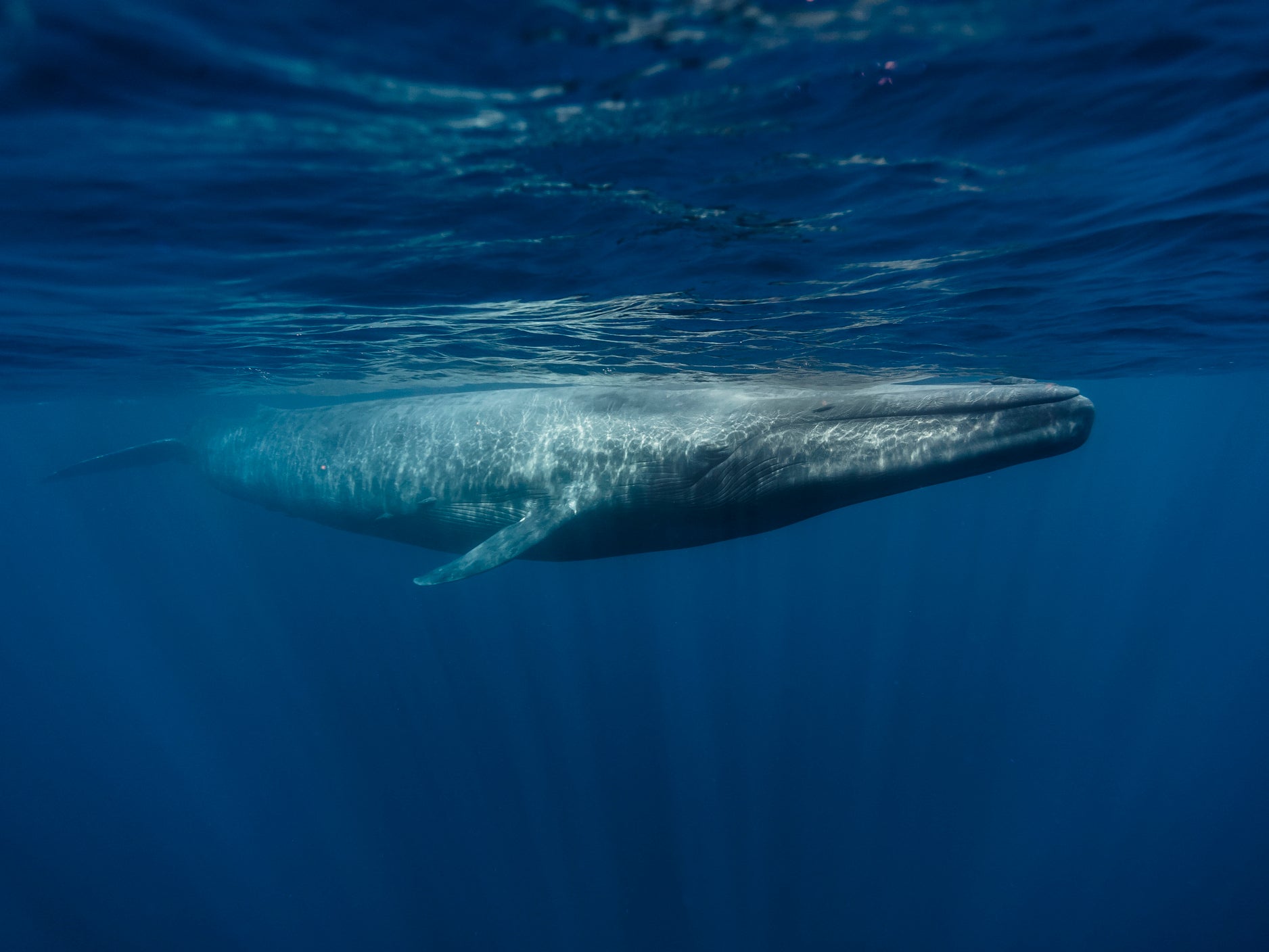Previously unknown population of blue whales found living in Indian Ocean
‘Remarkable’ discovery after research team detect unrecognised song

Your support helps us to tell the story
From reproductive rights to climate change to Big Tech, The Independent is on the ground when the story is developing. Whether it's investigating the financials of Elon Musk's pro-Trump PAC or producing our latest documentary, 'The A Word', which shines a light on the American women fighting for reproductive rights, we know how important it is to parse out the facts from the messaging.
At such a critical moment in US history, we need reporters on the ground. Your donation allows us to keep sending journalists to speak to both sides of the story.
The Independent is trusted by Americans across the entire political spectrum. And unlike many other quality news outlets, we choose not to lock Americans out of our reporting and analysis with paywalls. We believe quality journalism should be available to everyone, paid for by those who can afford it.
Your support makes all the difference.Though they are the biggest animal lifeform ever to have existed and inhabit every ocean on our planet, blue whales are notoriously hard to find.
So it is perhaps unsurprising that scientists have said it “blows your mind”, to find a previously unknown population of the shy leviathans living in the Indian Ocean.
The whales were discovered when an unrecognised blue whale song was recorded.
The bass rumble of a blue whale’s vocalisation is one of the lowest frequency sounds made by any animal, and can be heard by other whales over distances of 500 miles.
Helpfully for researchers, each population of blue whales sings in its own distinctive pattern.
In 2017, the unrecognised vocalisation was picked up in the Mozambique Channel off Madagascar by Dr Salvatore Cerchio, the director of the African Aquatic Conservation Fund's Cetacean Programme who was studying a different species of whale at the time.
He recognised the recording as being a blue whale song which had never previously been described.
He was also working with a team of scientists collecting acoustic recordings off the coast of Oman in the Arabian Sea, which picked up the same unusual song.
It was recorded even more prevalently off Oman than the first recording off Madagascar, and it became clear to the researchers they had found what was likely a previously unrecognised population of blue whales in the western Indian Ocean.
“It was quite remarkable,” said Dr Cerchio, “to find a whale song in your data that was completely unique, never before reported, and recognize it as a blue whale.”
Blue whale song has been extensively studied globally, and several blue whale populations have been identified based on their distinct songs throughout the Indian Ocean.
"With all that work on blue whale songs, to think there was a population out there that no one knew about until 2017, well, it kind of blows your mind," Dr Cerchio said.
The work revealed the whales are living from the Arabian Sea coast of Oman across to the Chagos Archipelago in the central Indian Ocean and as far south as Madagascar in the southwest Indian Ocean.
The recordings from the Chagos Archipelago came to light after the research team reported their findings to the International Whaling Commission (IWC) in 2018.
Researchers Emmanuelle Leroy and Tracey Rogers of the University of New South Wales were also conducting acoustic research on blue whales in the Indian Ocean and found they had detected the same pattern.
“Shortly after we made the first report at IWC,I received an email from Emmanuelle saying, ‘Hey Sal, I think we have that Oman song off the Chagos!’” said Dr Cerchio.
Andrew Willson from Five Oceans Environmental Services LLC, who led the recording operation said: “Before our recording effort off Oman, there was no acoustic data from the Arabian Sea, and so the identity of that population of blue whales was initially just a guess.
“Our work shows that there is a lot more to learn about these animals, and this is an urgent requirement in light of the wide range of threats to large whales related to expanding maritime industries in the region.”
Blue whales were hunted close to extinction around the world during the 20th century, and populations have only started to recover slowly over the past decades following the global moratorium on commercial whaling.
The Arabian Sea was where much illegal whaling was done by Soviet nations in the 1960s, an activity which nearly eradicated what were already likely to be small populations of humpback whales, blue whales, sperm whales, and Bryde’s whales.
Some researchers consider both the northern Indian Ocean blue whales and Arabian Sea humpback whales to comprise unique subspecies, not simply populations, making them particularly special and important to biodiversity.
"For 20 years we have focused work on the highly endangered Arabian Sea humpback whale, for which we believe only about 100 animals remain off the coast of Oman,” said Suaad Al Harthi, the executive director of the Environment Society of Oman.
“Now, we are just beginning to learn more about another equally special, and likely equally endangered, population of blue whale.”
The research in the journal Endangered Species Research.




Join our commenting forum
Join thought-provoking conversations, follow other Independent readers and see their replies
Comments